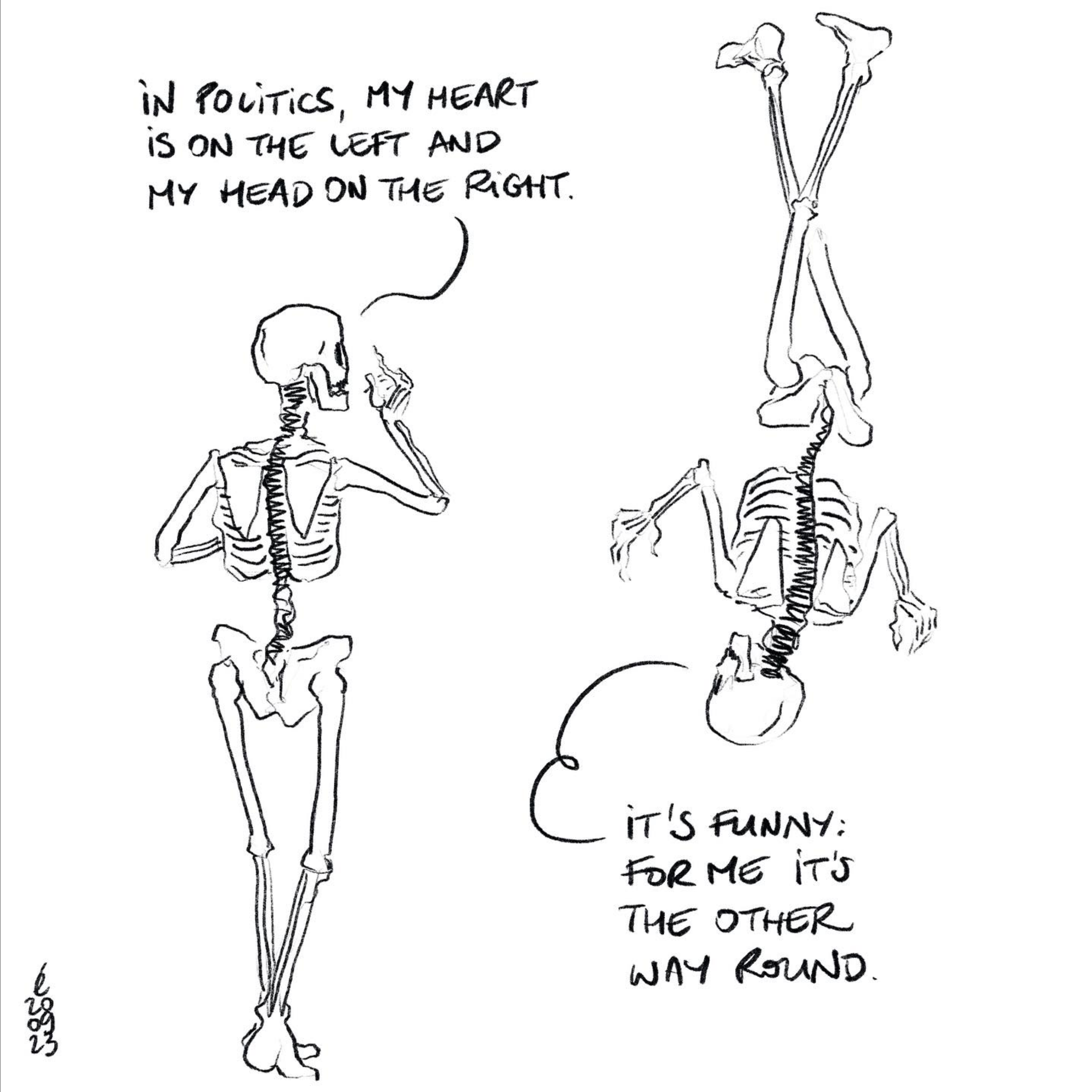
The tool that supports the Decide Madrid portal is called ‘consul’, a name chosen intentionally because its plural in Latin means “those who walk together”. To have influence when it comes to changing things, it is necessary to mobilize, but to do so it is necessary to be able to motivate action. And that is no easy task.
This article transfers all the lessons learned from the case of the civic crowdfunding platform Goteo.org to the Citizen Proposals section of the platform Decide Madrid, that is, it shows how the dynamics created in crowdfunding campaigns can help digital political participation.
The idea: to seek the “progressive engagement” of citizens using gamification mechanics. These mechanics focus on providing incentives to participants in a staggered manner, on the one hand, inviting them to overcome goals and, on the other hand, when they reach them, rewarding them with new resources.
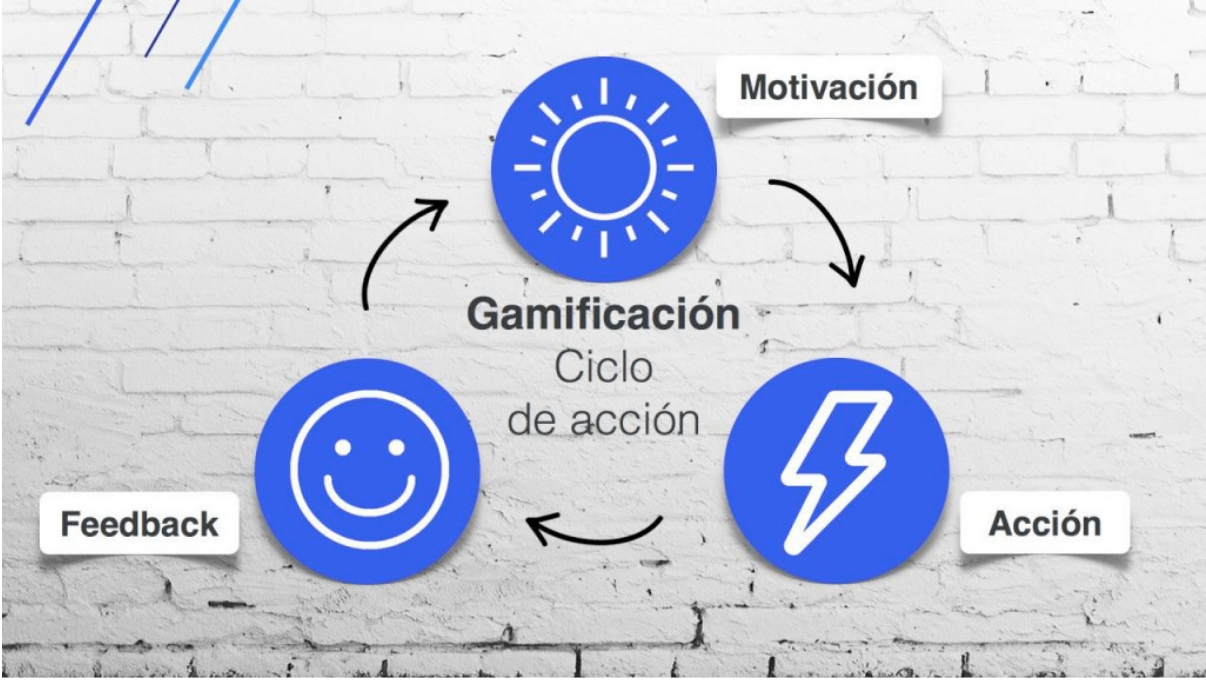
Citizen advocacy? What kind of deception is that?
One of the institutionalized, but not sufficiently expanded forms of citizen advocacy are citizen initiatives, proposals or actions promoted by citizens with the objective of influencing the political agenda or the decision making of the authorities.
Citizen initiatives function as participatory mechanisms that allow people to propose laws, public policies or specific actions to address community problems or needs. While these allow citizens to initiate the decision-making process from below, other forms of participation, such as public consultations or hearings, generally involve citizens expressing their opinions or concerns about decisions already proposed by the authorities.
What is important here is that these initiatives usually require a certain number of signatures or endorsements to be officially considered and this requires a successful strategy.
The Challenge
In the case of Decide Madrid, the challenge of each proposal is not trivial, since it must get the support of at least 1% of the population census in Madrid, so that it can be voted in referendum and carried out by the administration. And that means that at least 28,413 supporters must be reached. Not an easy task considering that we all have a life, obligations and little time to devote to anything that has nothing to do with our basic needs. In fact, there are many factors that can make this goal unattainable for users, starting with the lack of knowledge of the rules of the game, feeling alone in the face of the great challenge, not having the tools to join others, the lack of feedback or support from the platform, etc.
Now, is it possible to improve the user experience so that the initiatives have more impact? Of course it is. Let’s see how.
1. Improving the Proposals Dashboard
After a series of co-creation sessions, together with the Participation Area of the Madrid City Council, the Platoniq team focused on the strategic design of a new space within the Citizen Proposals section of Decide Madrid, the Citizen Proposals Dashboard.
In the co-creation sessions, users of the platform, members of the Decide Madrid team (communication, development, design…), members of other ParticipaLab research groups, representatives of other signature platforms and NGOs were invited to participate in order to respond to the needs and expectations expressed by the users of the platform, both in the workshops and in interviews and reports carried out by other ParticipaLab research groups. Here are some of the results:
2. Lessons from crowdfunding applied to the Proposals Panel
A platform such as Decide Madrid is necessary for many reasons. It is one of the driving forces for creating a democratic culture and facilitating citizen collaboration in improving public management and, in this sense, its success and raison d’être should not be measured by the number of citizen proposals that reach or fail to reach the target.
But neither can we run away from the figures: in a first analysis, the data showed very unsatisfactory results: 73% of the proposals did not reach 100 supports and 99% did not reach 1,000. Among all the proposals, 4 have reached more than 50% of the necessary support to pass to vote and, especially, we were particularly struck by the fact that 80% of the proposals were only active on the first day. Clearly the “engagement” of the platform became the key issue to address.
Given the success of crowdfunding in terms of training and engagement, we sought to transfer to the Citizen Proposals section of Decide Madrid what we had learned in the dynamization of crowdfunding campaigns of Goteo.org.
The usual canon of crowdfunding:
- When a project is published on a crowdfunding platform, it adapts to a series of characteristics, common in the vast majority of platforms:
- The campaign has a clear duration, approximately 40 days. The start and end date are very present in the public information of the project.
- The goal is to reach the defined economic objective.
- The all-or-nothing formula is followed so that if the goal is not reached, all the money is returned at no cost.
- A series of rewards are offered according to the contribution made, as an incentive or thanks to the person who supports.
- The rules are simple and visually very recognizable on the project page itself, so they are quickly assimilated by the promoters, as well as by the supporters. That is one of the reasons why crowdfunding works so well.
When we did the exercise of looking for equivalences with Decide Madrid, we found that although the rules are described in several parts of the website, they were not sufficiently explicit in the proposal itself, nor motivating, as happens in crowdfunding campaigns.
“He who does not cry, does not suck” (popular proverb).
Studies on crowdfunding, based on the experience of Goteo.org, and after having attended more than 1,430 campaigns with a success rate of 76%, indicate that campaigns that are not disseminated or led by their promoters have little chance of achieving their goal, so motivating users to spread the word is vital.
Monetary and other support for any initiative does not come alone. It is an effort that must be led by the person promoting the idea. Be prepared to invest time and energy in regular outreach throughout the campaign, preferably as a team, or the campaign will not succeed.
- ¿Cómo mantenemos la atención y la motivación del usuario en difundir?
- ¿Cómo transformamos la plataforma Decide Madrid en una plataforma que hable, recomiende acciones, estimule en el gran reto de conseguir comunidad?
- ¿Cómo conseguir apoyos a propuestas de usuarios que normalmente no tienen experiencia o conocimientos sobre difusión y comunicación digital?
Knowing that the Propuestas en Decide Madrid campaigns span 12 months, cultivating the user’s attention and commitment to your campaign is not easy. For this reason, in one of the co-creation dynamics of the workshops, we proposed the exercise of staggering the challenge of 28,413 supporters in smaller and more achievable goals. On the other hand, we also wanted to check if it was possible to establish an equivalence of ideal times for these new goals.
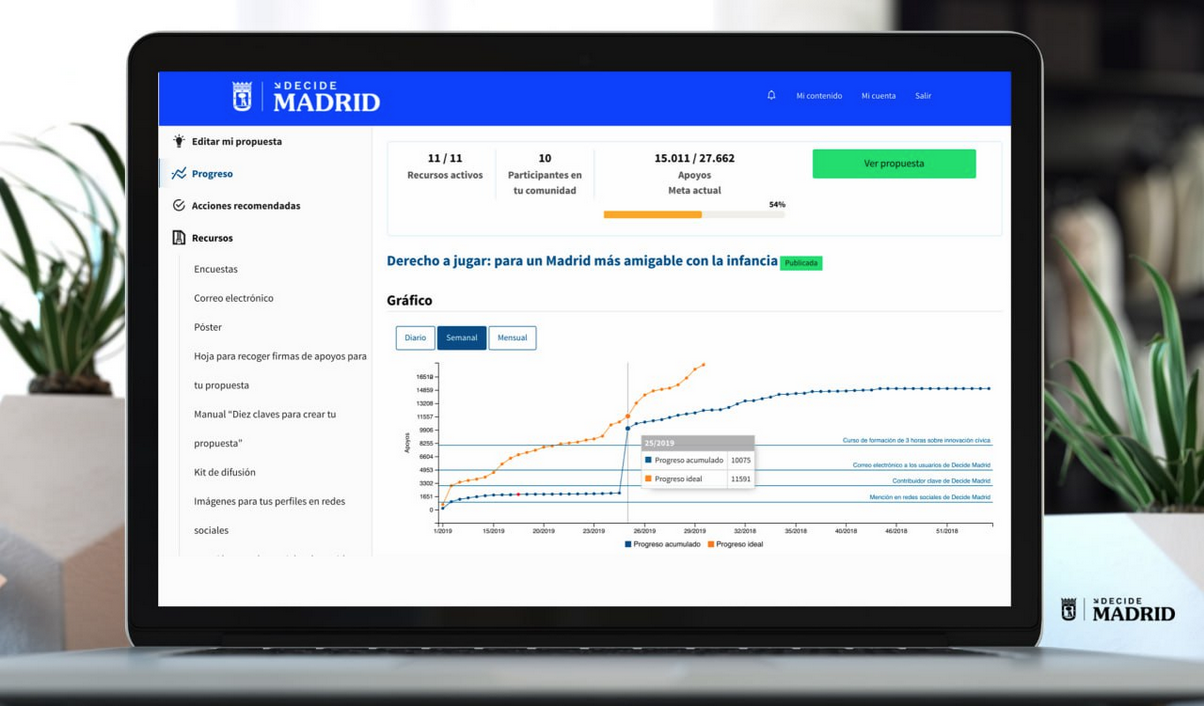
Offering resources and tips to motivate the user in the dissemination of the proposal was the basis for the development of the Proposal Panel and its gamification mechanics. However, even when offering resources and useful information, the user must be informed about it.
To enrich the minimal and non-intrusive communication model that Decide Madrid advocates, we looked for more motivating communication models based on some gamification mechanics tested in the co-creation workshops. This way, with a minimum of information and feedback, we manage to create more attention and provide a rhythm to follow.
“To climb a ladder you must start with the first step” (Walter Scott).
Another of the revelations provided by the analysis of crowdfunding campaigns is that during the first days there is a special dissemination effort that must be carried out among those who promote the project and their community or people close to them (friends, colleagues, acquaintances, relatives).
Normally only after reflecting a collection of between 20% and 30% it is proven that people unknown to the promoter, who can attract the platform and other sources, will be encouraged to bet on the idea, following a kind of “herd effect”.
If we look at the graphs of the two successful campaigns of Decide Madrid, we can see that they follow a similar pattern, coinciding that in the first week they manage to exceed 100 supporters and two months into the campaign they would be more than 20% of the 27,000 supporters (needed at that time). They would comply with the crowdfunding rule that indicates that campaigns that exceed 20% at the beginning of the campaign have a high probability of reaching the goal. The equivalent of the first 7 days of a 40-day crowdfunding campaign would be the second month, around the 63 days of the Decide Madrid campaign.
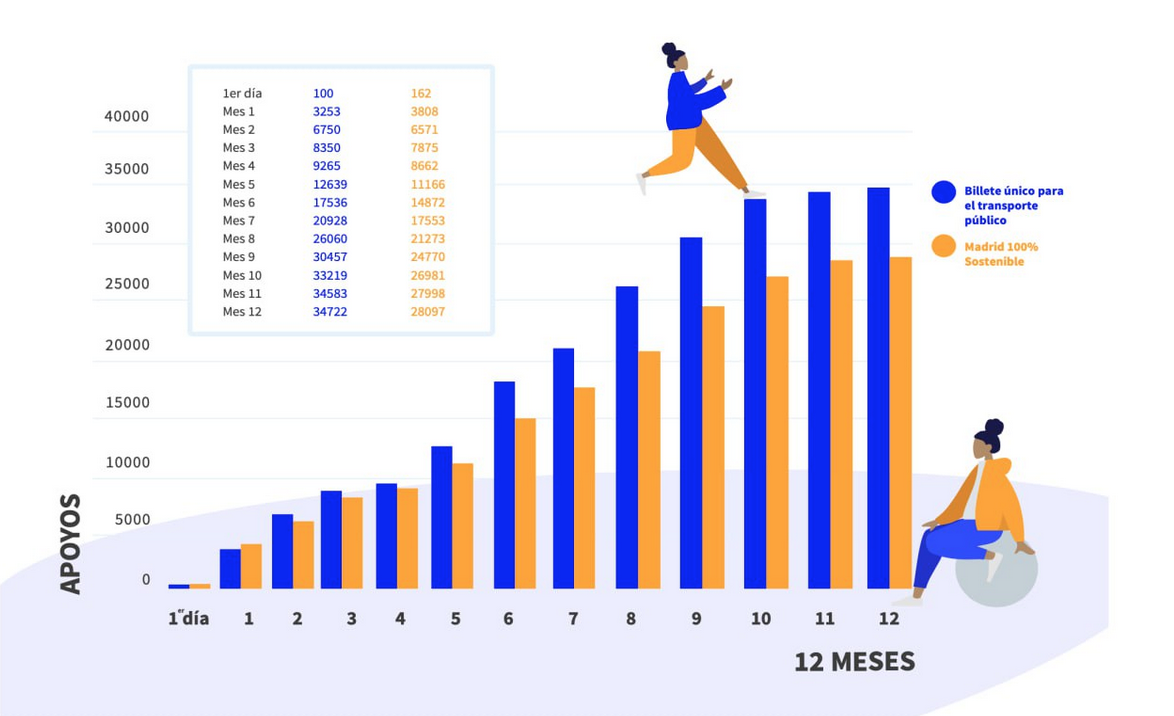
Two of the goals that should be included in the Panel’s dynamization would be: the goal of 100 supports during the first days and the goal of 5,500 supports before two months to unlock resources or special rewards. Both indicators show us a proposal with a high probability of success.
“A goal without a plan is nothing more than a wish” (Antoine de Saint-Exupéry).
One of the indispensable innovations that needed to be implemented was the possibility of leaving the proposal in draft mode. Up to now, the user filled in the proposal form and when the proposal was saved, it was directly published. This did not make it easy for the user to be aware and prepared for the first day of dissemination. Thus, the vast majority of proposals missed one of the most visible moments for new citizen proposals, without having to make any effort, since they were directly published on that first day.
With this new functionality, the proposal can be in draft mode for as long as needed, leaving space to access the resources available on the Panel and reinforcing the message that it is necessary to be prepared if the proposal is to have influence.
“If you are looking for different results, don’t always do the same thing” (Albert Einstein).
In the arduous task of disseminating a crowdfunding campaign, apart from social networks, where it is important to insist regularly varying the message, so that friends and followers are updated on the progress of the campaign, it is necessary to consider different media and combine them.
From a message template that can be adapted to be sent by e-mail, to conversations or even calls to specific people. We are campaigning and, just as we would do with a real-life fundraiser, the more places we can reach, the better.
In this sense, for Decide Madrid we generated a series of examples of digital resources with specific copies such as: a template designed to receive by email that the user can use to disseminate, a series of visual designs of posters, images for RRSS and about thirty dissemination tips (in the actions section) that should help in the dissemination of the citizen proposal in different channels, digital and physical spaces.
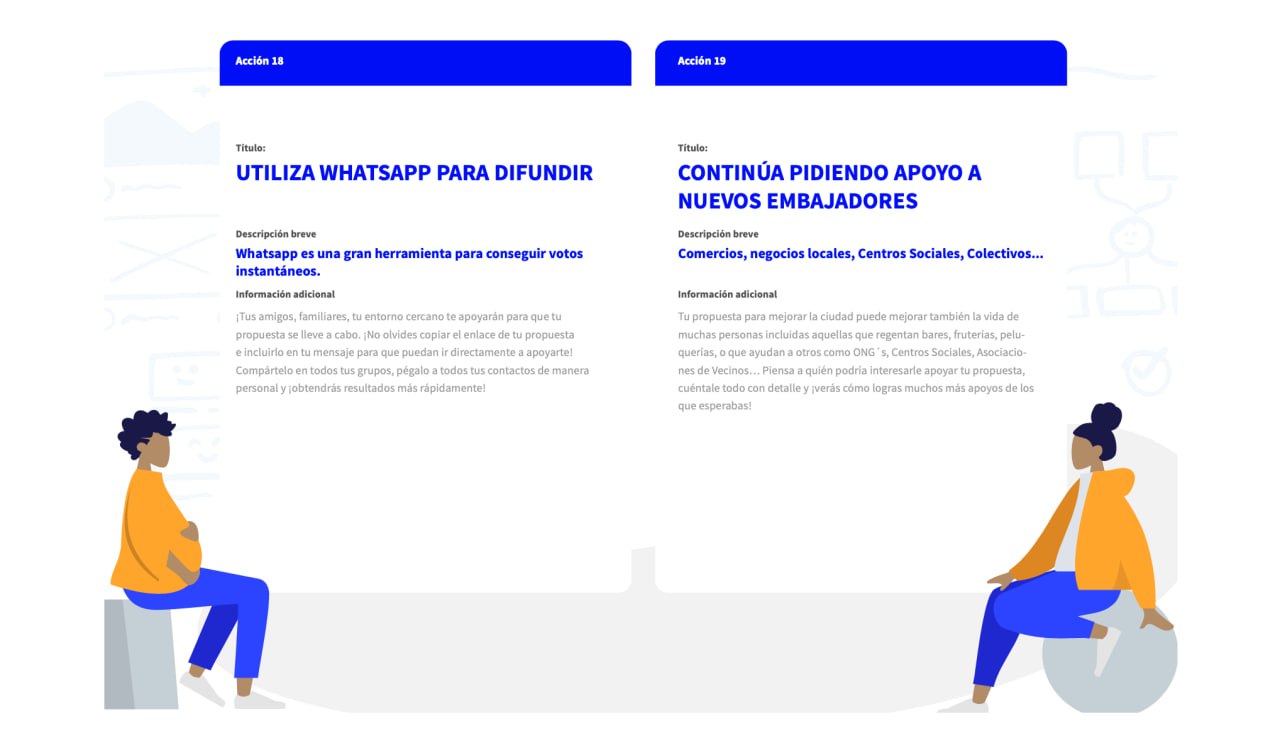
Continuing with the lessons learned from crowdfunding campaigns, we find ourselves with the recommendation to invest time in discovering new Internet sites or groups where people talk about topics and projects similar to the one being promoted. Searching, contacting and, if there is affinity, talking about the initiative in search of other knowledge and dissemination capabilities (and not only monetary support), offers good results and a deeper commitment to the initiative.
The initial proposal of the Proposal Panel counted on aspects such as a collaborator manager, users who, without being the initial authors, could join the dissemination and manage the proposal collectively. However, the implementation had to be discarded because other functionalities were evaluated with less risk and more impact. Nevertheless, it was possible to implement a first version of the Survey functionality, as a tactic to find and add potential collaborators to the proposal.
“There are two ways to spread light: to be the lamp that emits it, or the mirror that reflects it” (Lin Yutang).
Writing joint messages to all users who are contributing, is a tool that used with moderation can serve to solicit more ideas or contacts for dissemination, even to forward the message among their known contacts and social networks.
In this sense, although the Community space in the Proposals Panel has been reduced in terms of functionality, you can send a mass message to users who follow the proposal’s community and also contact them privately on an individual basis.
“I never get angry for what people ask me, but for what they deny me” (Antonio Cánovas del Castillo).
Often a tweet, post or comment in other media by an authority figure can mean a big push for a crowdfunding campaign. Someone who is followed by many people on social networks, or who speaks on radio or television. It is worth sending a personalized message when the campaign is already progressing, to ask for support in dissemination to a journalist, a guru of new technologies or a scholar of the field.
A resource for Decide Madrid that was highly demanded by users in the co-creation workshops was to be able to access databases of contacts, alliances with NGOs or people with certain prestige, legitimacy, who might be willing to disseminate proposals on a given topic or cause. However, being able to access this type of resources entails certain technical complexity, risk of misuse, and may mean an extra expense.
For this reason, the possibility of obtaining access to a data sheet of public contacts of NGOs ordered by theme and the timely sending of a mass mailing to the Decide Madrid Community was proposed. This type of resource would be managed by the Decide Madrid administrator and would be conditioned to a high support target (around 14,000 supporters, half of the final goal).
“The drop pierces the stone, not by its strength, but by its constancy” (Ovid).
With different intensity, it is important in crowdfunding campaigns not to let a single day go by without doing something related to the campaign. The same applies if there is more than one person promoting the project, in this case forwarding and echoing in coordination with each new message.
In the co-creation workshop we worked on tips, actions that could be proposed from the platform during the first weeks and more staggered during the rest of the campaign. We also proposed messages or feedbacks to the promoter about the state of the campaign, such as notices of new developments and new graphics that could help to better understand if an action taken had borne fruit, increasing the number of supporters or followers.
3. Taking your participation to another level
In conclusion, Platoniq relied on some rules that are promoted on crowdfunding platforms and the potential of the “reward” as an incentive for users who publish proposals and proposed the development of motivational mechanisms to encourage user engagement and attention in the dissemination.
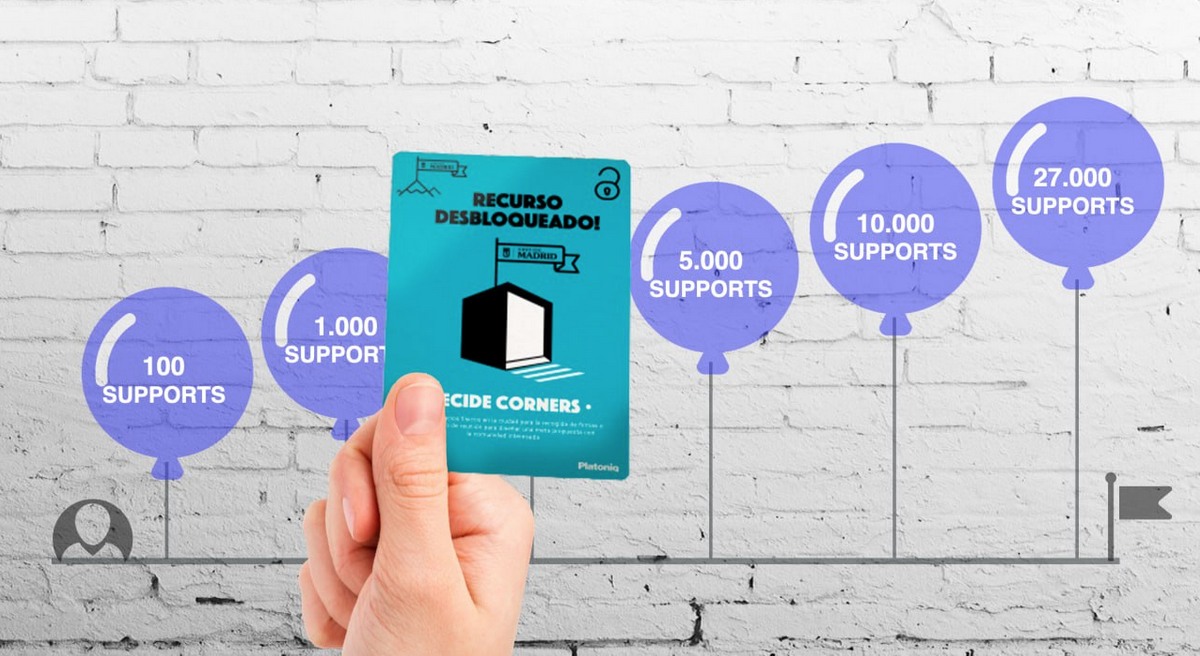
In the future, Platoniq plans to continue developing the connection between civic crowdfunding strategies and citizen participation platforms. On the one hand, deepening at a technical level to be able to cross initiatives from one platform to another since there have been some cases of correspondences between Goteo campaigns that have first gone through crowdfunding and then have continued as proposals in participation platforms of Spanish municipalities such as Decide or Decidim. On the other hand, we want to continue with the research and design of gamification mechanics for citizen participation platforms, especially conceptualizing new types of rewards and becoming more sophisticated in terms of functionalities and usability of the Panel.
